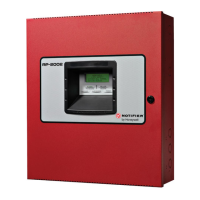2. M.
N.
TCAS II continually plot local air traffic on the associated display, and
in the event of a conflicting flightpath, guides the pilot toward the
correct avoidance maneuver.
If the intruding aircraft is also equipped
with TCAS, the two systems can communicate their mutual intentions
through the Mode S transponders.
The coordinated advisories that result
allow the two pilots to execute complimentary avoidance maneuvers.
MLZ-850 Microwave Landing System (Optiona”
The MLZ-850 Microwave Landing System (MLS,
components:
● ML-850 MLS Receiver
● CM-850 MLS Control/Display Unit
)
consists of the following
The MLS operates on one of 200 channels between 5031.0 and 5090.7 MHz.
The signal format is time multiplexed, that is, each function (azimuth,
elevation, basic data, auxiliary data, and back azimuth) is transmitted
sequentially on a single carrier frequency.
Each function is identified
by a digitally encoded preamble. The preamble is followed by TO and FRO
scanning beam signals or more digital data depending on the function.
The ML-850 MLS receiver provides guidance to the azimuth/back azimuth and
elevation (glidepath) flight path angles selected on the control unit or
automatically transmitted from the ground station.
Guidance is output
from the receiver in the form digital deviation signals
Global Positioning System (Optional)
The Global Positioning System consists of the following components:
. Global Positioning System Sensor Unit (GPSSU)
The GPSSU is a two-channel, single-frequency global positioning system
(GPS) receiver capable of receiving the L1 (1575.42 MHz) frequency
transmissions from NAVSTAR satellites.
The GPSSU performs the following functions:
. Tracks the L1 coarse acquisition (C/A) code transmitted by the NAVSTAR
global positioning system (GPS) satellites.
c Locks on to the satellite signal.
● Computes the pseudo range from the C/A code. Pseudo range consists of
the actual range between the satellite and receiver modified by
receiver clock errors.
c Computes the pseudo range rate from the satellite (Doppler). Pseudo
range rate consists of the actual range rate modified by receiver
clock errors.
22-14-00
Page 18.5/18.6
Apr 15/93
Use or disclosure of information on this page issubject to the restrictionson the title page of this document,

